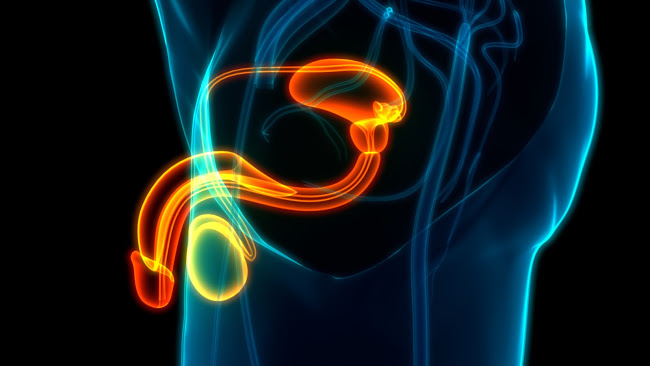
What is prostate cancer? What are its symptoms and risk factors? How is it diagnosed and treated?
Prostate cancer affects the prostate, a walnut-sized gland near the bladder. The prostate produces fluid that mixes with sperm to form semen.
This form of cancer is more common among older men. When cancer cells are limited to the prostate gland itself, it is called localized prostate cancer.
Scientists aren’t sure what causes prostate cancer. But we do know that some factors put men at higher risk for the disease:
- Age. Prostate cancer tends to occur after a man reaches age 55.
- Location. Prostate cancer is more common in Northern Europe and North America. In the United States, African American men are at higher risk.
- Genetics. Men who have a close relative with prostate cancer are twice as likely to develop prostate cancer themselves. This risk increases if a man has more than one relative with prostate cancer.
- Smoking. Men who smoke are at higher risk for prostate cancer than those who don’t.
- Poor diet/obesity. Obese men and those with high-fat, high-sugar diets are also at higher risk of developing prostate cancer.
Prostate cancer may have no symptoms at the beginning. But in general, men with prostate cancer may experience the following:
- problems urinating
- pain in the pelvis, lower back, or hips
- bone pain
- poor appetite and weight loss
- blood in the urine or in the seminal fluid
- pain when ejaculating or during urination which is much less common
Doctors use several tests to diagnose prostate cancer.
- Digital rectal exam (DRE). During a DRE, the doctor inserts a clean, gloved finger into the man’s rectum. This allows the doctor to feel any abnormalities or lumps. Usually, the test takes just a few minutes.
- PSA test. PSA stands for prostate-specific antigen, a protein produced by prostate gland cells. Higher levels of PSA in the blood suggest possible cancer.
- Biopsy. If DRE and PSA test results suggest cancer, a biopsy is usually the next step. This involves removing a small portion of prostate tissue and analyzing it under a microscope to see if cancer cells are present.
Treatments for prostate cancer may include the following:
- Active Surveillance. Sometimes prostate cancer doesn’t need immediate treatment. During active surveillance, doctors monitor the cancer and begin treatment when necessary.
- Surgery / radical prostatectomy. Prostatectomy is the removal of the prostate gland. Some men experience incontinence and erectile dysfunction after this procedure, but both issues can be treated.
- Radiation. External beam radiation uses x-rays from outside the body to attack the cancer cells. Brachytherapy is another approach that places radioactive “seeds” directly into the body.
- Androgen deprivation therapy (hormone therapy). Because prostate cancer cells are sensitive to testosterone, this therapy aims to reduce testosterone levels. Usually this is achieved through medications or rarely surgery to remove the testes (the glands that produce testosterone).
- Chemotherapy. Combinations of drugs are used to attack cancer cells, usually in men whose cancer has spread.
- Cryotherapy. With this approach, prostate cancer cells are destroyed by freezing them.
Resources
- Urology Care Foundation
“What is Prostate Cancer?”
(Updated: August 2018)
https://www.urologyhealth.org/urologic-conditions/prostate-cancer




